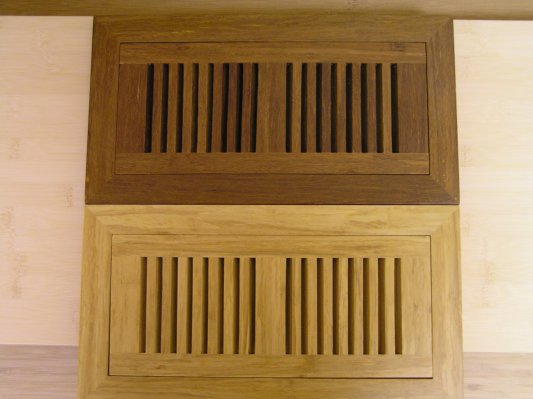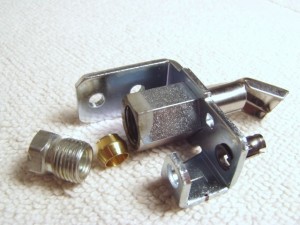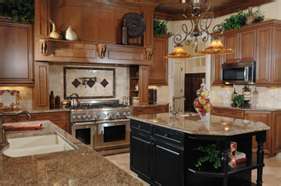Knowing your necessary oven parts
 Regularly maintaining your furnace parts will stop dirt and grime building up in the most common areas and reduces the need for a replacement of the entire system. Too much dirt in the main components will cause the efficiency of the furnace to drastically reduce from its normal state. The furnace filter should be cleaned or replaced close to the heating season and on a monthly basis when used frequently. It can be checked by simply taking it out and holding it up in the light to see if it is clogged up. If it looks clogged up replace it immediately regardless of how long it has been used. A qualified technician should also carry out maintenance on the furnace once a year to also reduce the risk of the parts failing. How you access the area where the parts are located will depend on the type of furnace you have. However, all the components are often similar regarding like for like versions such as oil, gas and electric furnaces.
Regularly maintaining your furnace parts will stop dirt and grime building up in the most common areas and reduces the need for a replacement of the entire system. Too much dirt in the main components will cause the efficiency of the furnace to drastically reduce from its normal state. The furnace filter should be cleaned or replaced close to the heating season and on a monthly basis when used frequently. It can be checked by simply taking it out and holding it up in the light to see if it is clogged up. If it looks clogged up replace it immediately regardless of how long it has been used. A qualified technician should also carry out maintenance on the furnace once a year to also reduce the risk of the parts failing. How you access the area where the parts are located will depend on the type of furnace you have. However, all the components are often similar regarding like for like versions such as oil, gas and electric furnaces.
Furnaces for the home require regular maintenance if they are to provide long term benefits and trouble free operation. This is because each furnace part functions cooperatively with the other to provide adequate warming to the home. Troubleshooting is one of the best methods for discovering which parts require attention and which components are working as they should be. Signs pointing to the failure of a particular gas furnace part are usually mechanical in nature. Electric furnace issues on the other hand are generally caused by an electrical fault somewhere within the system. Generally speaking, oil furnace parts are more similar to those found in gas furnaces than electric ones. A good tip is to get familiar with your furnace and know its components inside out using the manual provided for that particular brand or model. After all, you will be needing the warmth it releases for the most part of the year and this best ensures that you are prepared if the system was to suddenly stop working. In most cases, a professional repairman may be needed to determine which part is recommended to fix the fault.
It is worth remembering that each furnace has its own specific parts based on model and brand. This means that you are much more likely to find the parts you need from the manufacturers themselves. It is also possible to acquire your furnaces parts online from independent specialist dealers, some of which may be able to offer the components you need at discounted prices. However, if your furnace is still under warranty you would be much better off leaving it to the service provider to fix the problem as fitting parts not approved by the manufacturer can make the warranty void. Be sure to check if your furnace is within the warranty period as the parts you need may already be covered. Depending on the agreement, a professional may also be discharged free of charge by the manufacturer to solve the problem sufficiently.
Although furnaces are designed to provide years of efficient service they are like every other product in that sooner or later they will require repair or upgrading. To keep replacement costs at their minimum a warranty is essential. Do not worry if this is not available to you currently, as explained above some parts can be replaced without professional assistance. As with any DIY approach it is vital that you know exactly what you are doing as further mistakes can lead to added problems and costs. The general rule of thumb is if in doubt seek the professionals out.
Furnace Part
While there are varied kinds of furnaces the majority of them operate in the same basic way. The four main types of furnaces include gas, electric, oil, and solid fuel. An example of a solid fuel heating system is the wood burning furnace. Despite the fact that the types of fuel used differs most furnaces parts tend to be very much alike. The basic design of a furnace begins with a thermostat which moderates the room temperature and determines when the burner should be ignited. By constantly gauging the indoor temperature of the home a warm comfortable environment can be maintained. It is simply the regulating board of the furnace that is often situated in a mounted position on a wall. Which wall depends on the original location of the installed heating system. The igniter is what glows to light the burner. The burner is the most important and main heating element of the furnace which aptly burns the fuel to create heat. It is usually located near the bottom of the furnace behind the access panel. Heated gas from the burner starts to increase the temperature inside the furnace heat exchanger, which both warms the air that is distributed in the home and separates the fumes generated by the burned fuel from the heated air that is circulated. You should frequently monitor the burner to make sure that the flame it produces is blue. A yellowish-red flame means that the burner needs to be cleaned otherwise the holes on the component will become clogged and make the part wear out at a faster rate.
Other furnace parts of the basic design includes the blower. This particular part draws air in to the furnace to be warmed and also distributes the heated air back out to the area that requires heating. The air is moved through ducts in reciprocal directions. Cool air gets drawn in to the furnace through the return ducts while the warmed air is transferred into the living space through the supply ducts. The air that is heated leaves the duct work and makes it into the home via openings known as heat registers or vents. There is also a fan limit switch which stops the blower from releasing air out until it has been heated to the right temperature. The fan switch also automatically shuts off the burner in the event that the temperature becomes too high. Therefore, it performs as both a safety and energy efficiency feature as it further prevents the furnace from running when operation is not required.
A filter can also be found in most home furnaces. This part helps to filter the air that is inhaled and therefore should be cleaned or replaced on a regular basis. Doing this will ensure that the furnace is in full working order and that the longevity of its use is prolonged. The pilot light is another basic yet important furnace part that ignites the burner in order to heat the air that is dispersed through the air ducts and vents. It is normally located at the bottom of the furnace behind an access panel that either detaches or swings open. When trouble is reported it is one of the first components checked by technicians. Relighting the pilot light yourself can prevent an unnecessary and costly service call. If you are unaware of how to light the pilot you can ask a certified technician to show you how to do it safely and properly on their next visit.
Fan belts are connected to the blower and should also be checked in a furnace. A worn out fan belt lowers the efficiency of a unit which can significantly increase heating bills. Blower fan belts should be changed quite regularly to better guarantee that the furnace system operates as efficiently as possible. Knowing the basic parts of a furnace gives you a general idea of how the system works. While seeking professional assistance for an actual furnace repair is highly recommended learning the fundamental furnace parts may be helpful in performing light maintenance or troubleshooting any issues you may come across.
Parts Maintenance
The following guide explains how you can properly clean and maintain a gas floor furnace yourself. You will normally need the following tools and materials at hand to thoroughly clean your gas furnace:
Vacuum cleanerScrewdriverDamp clothToothpickGarden hose1 – Turn The Furnace Off
The furnace control valve should be turned to the off position and then the furnace should be left to completely cool down. The furnace should not be cleaned while hot as doing so can cause burn injury.
2 – Remove Register
The floor grill and the floor register surrounding the heat exchanger can now be removed. Using a vacuum cleaner clear out any dirt that has accumulated in the area. Then wipe the gas furnaces parts with a damp cloth. It is best not to use any cleaning solutions or solvents as they may leave some particles behind which will burn when the furnace is turned back on. These burning particles can cause an unpleasant smell in the home.
3 – Inspect Burners The protective coverings of the burner can be removed by taking out the screws in the manifold. Once this is done the burner should be able to slide out of the furnace. Check the burner for any damage or distortion and get a replacement fitted if there is a problem. Also clear out any dust or spider-webs visible as they can stop the burner from working properly. If there is a lot of dirt build up it can be washed out using clean water from a garden hose.
The protective coverings of the burner can be removed by taking out the screws in the manifold. Once this is done the burner should be able to slide out of the furnace. Check the burner for any damage or distortion and get a replacement fitted if there is a problem. Also clear out any dust or spider-webs visible as they can stop the burner from working properly. If there is a lot of dirt build up it can be washed out using clean water from a garden hose.
4 – Clean Burner Ports
Using a toothpick or wire brush remove any dirt from the holes in the burner. Too much dirt in this component can prevent proper lighting of the burners causing the floor furnace to produce very little or no heat at all. Then, with a damp cloth wipe the burner ports down.
5 – Check Other Components
While you have the furnace open take the opportunity to inspect the venting system and heat exchanger for any blockages or cracks. Staying ahead of any occurring problems will save you the hassle of finding out about them when you most need your floor furnace to be fully functional.
6 – Reassemble Old Furnace Parts
When you are satisfied that the furnaces parts are in their correct condition and have been cleaned with a damp cloth sufficiently you can place the burner back inside the furnace. Ensure that the screws are securely tightened and all the parts are returned in their correct positions. Then, place the furnace cover back on top and check that the floor furnace is working properly. If you smell gas turn the furnace off immediately and call your local utility company for further assistance.
If you do not feel confident or capable enough to take on the maintenance tasks for your furnace alone then always search for certified help from service technicians. While there will be a small charge for the service you are more likely to receive power savings and other longer term benefits. Ensure that the technician also inspects the thermostat and other important parts of the furnace system. Even though it is possible for you to maintain your furnaces parts yourself most manufacturers recommend that an annual professional inspection be performed. This will better ensure that furnace costs are kept at their lowest and efficiency rates at their highest.




